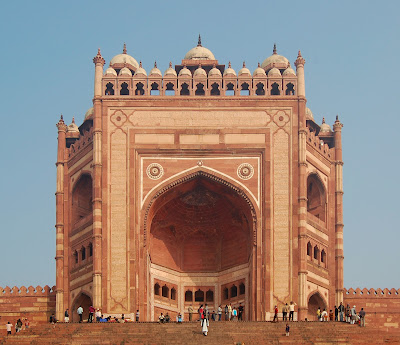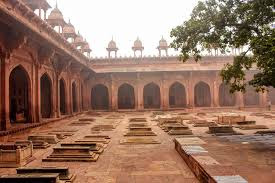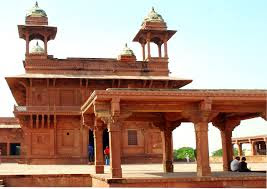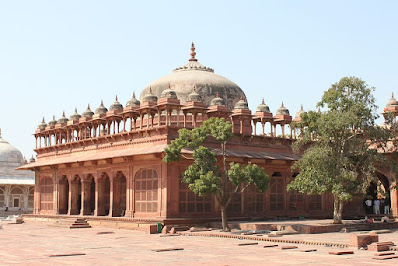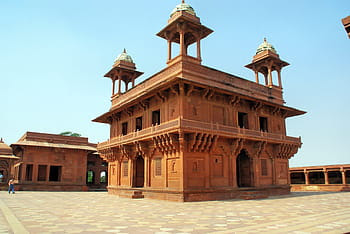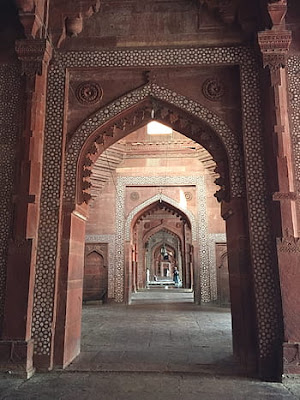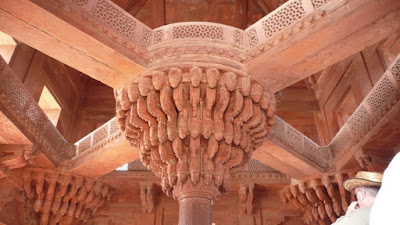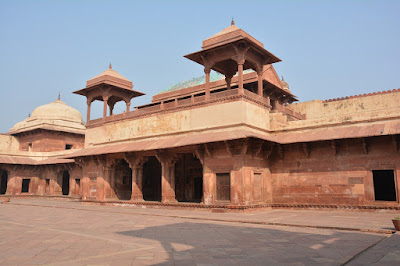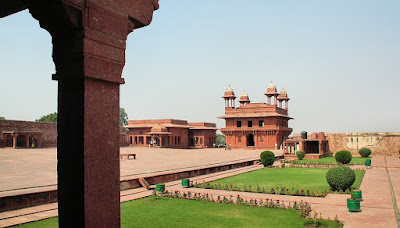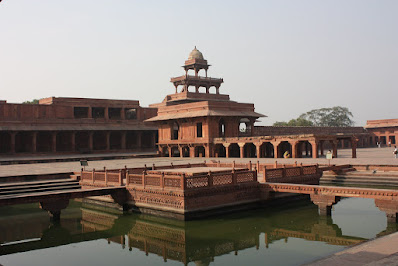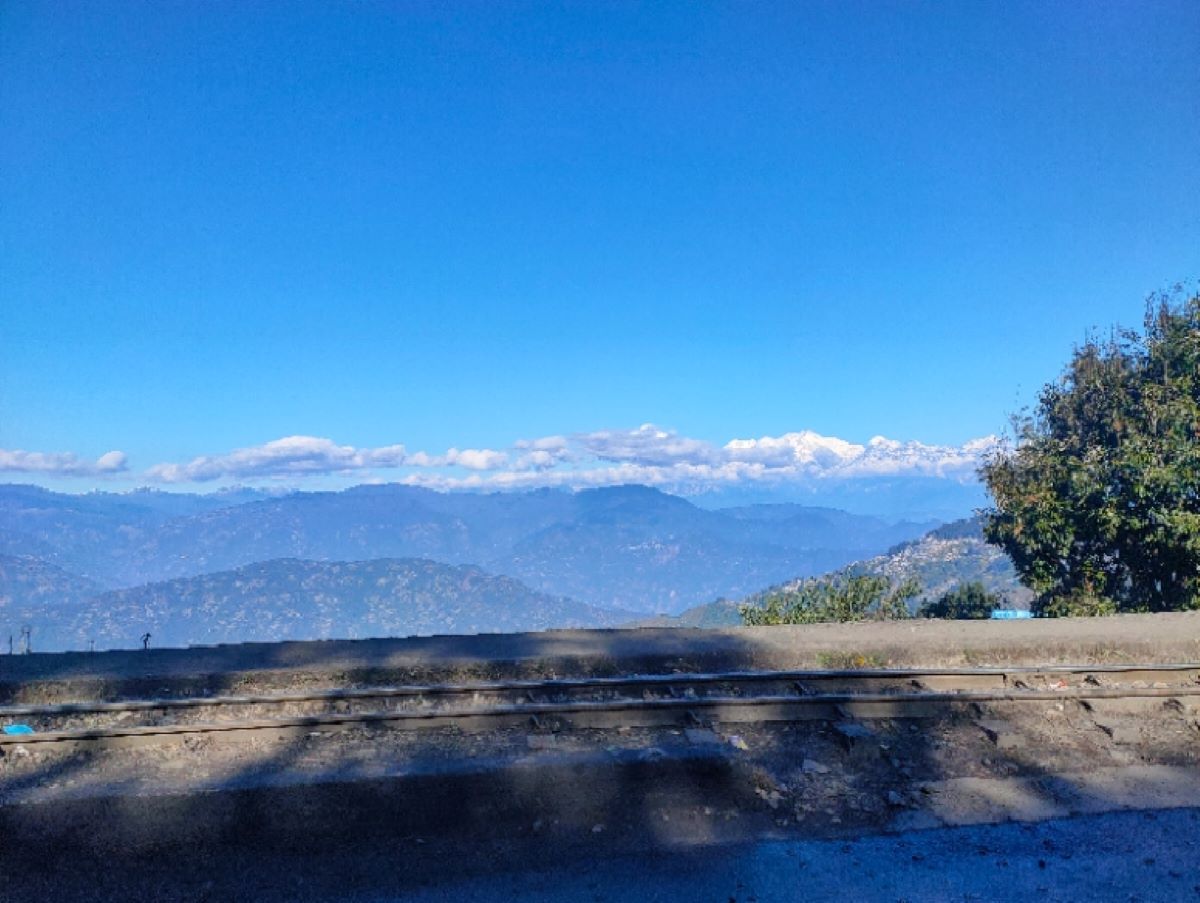Fatehpur Sikri

Fatehpur Sikri
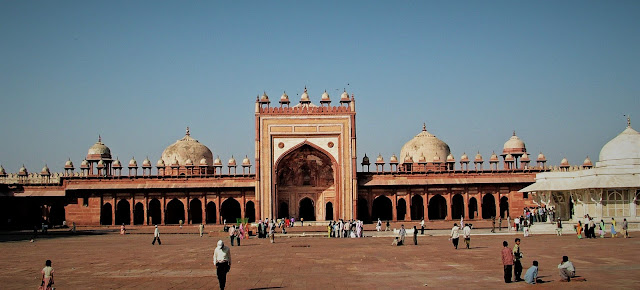
Timings:
Sunrise to sunset on all days of the week [6:00 am to 6:00 pm]
Entry Fee:
· Indian citizen and visitors: INR 35
· Citizens of SAARC and BIMSTEC Countries: INR 35
· Foreign visitors: INR 550
· No entry fee for children under 15 (both Indian and foreign)
Location:
Buland Gate, Dadupura, Fatehpur Sikri, Uttar Pradesh 283110 ⟵ Click here
Fatehpur Sikri Overview
Located at a distance of 40km from Agra, Fatehpur Sikri is a perfect one day trip from Agra. Fatehpur Sikri was founded by Mughal Emperor Akbar in 16th century which is made of red sandstone. It was originally a fortified city, construction of the new capital began in earnest in 1571 and was the capital of his Empire for fifteen years. In present times the city has become one of the chief tourist attractions of India and also it is a UNESCO world heritage site.
The majestic walls of this small city echoes of the Medieval Mughal Reign. The Mughal Empire between 1571 and 1585 while Akbar was the Emperor then, Fatehpur Sikri was the short-lived capital. Akbar once visited the village of Sikri to consult the Sufi Saint Shaikh Salim Chisti who replied that an heir would be born soon. Sure enough, on August 30, 1569 Akbar’s wife gave birth to a son. In gratitude, Akbar named the boy Salim after the astrologer, and two years later Akbar built his new Capital in Sikri. Of course the decision to build a new capital at Sikri was determined by more than sentiment. It was a strategic location in Rajasthan that put Akbar and his armies closer to the Gujarat region the next object of Akbar’s expansionist dreams. Gujarat was desirable because its coastal cities were ideally suited to take advantage of the lucrative trade to Arab lands. After Akbar’s departure the city was used only sparingly in the coming centuries.
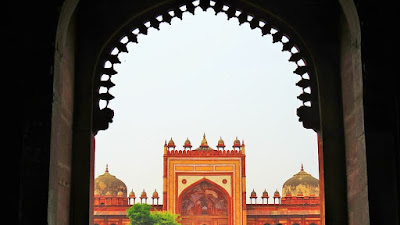 |
| Fatehpur Sikri |
However, it is impossible to capture in pictures a single iconic image of the city, in the way that the Taj Mahal can be framed in its totality in the viewfinder of any camera. Fatehpur Sikri is so large and decentralized that the city can only be experienced as a series of changing surroundings as one travels from courtyard to courtyard.
Fatehpur Sikri sits on rocky ridge, 3 kilometres in length and 1 km wide and the palace city surrounded by a 6 km long wall on three sides and another side( fourth side) surrounded by a lake. The buildings of Fatehpur Sikri show a fusion of schools of different regional architectural styles Gujarat and Bengal. This was because indigenous craftsmen were used for the construction of the buildings. The influences of Hindu and Jain architecture can be seen together with Islamic elements. There are many gates to access through the 5 miles long fort wall, namely, Delhi Gate, the Tehra Gate, the Chor Gate, the Lal Gate, the Agra Gate and Birbal’s Gate, Chandanpal Gate, The Gwalior Gate, and the Ajmeri Gate. For queen Jodha the palace has a summer palace and winter palace.
Note: – In ancient time there was a secret tunnel to connect Fatehpur (old capital) with New Delhi (Sahajabad, the new capital). This tunnel was used to transport artillery and other important items belonging to the Mughal emperors and empires. But there were other acquisitions that contained hidden treasures in this tunnel. So the tunnel was closed to protect the British from any plunder.
Photos of Fatehpur Sikri
➤ Frequently asked question about Fatehpur Sikri:
|
Summers |
April to June |
28°c – 45°c |
|
Monsoon |
July to Sep |
24°c – 32°c |
|
Winter |
October to March |
5°c – 27°c |
Monsoon and winter is the best time to visit Fatehpur Sikri. In summer the temperature is around 30 degrees Celsius to 42 degrees Celsius in Sikri. So summers are recommended to be avoided if you are planning to visit Fatehpur Sikri.
Q-2. What is the history of Fatehpur Sikri?
Ans: – The majestic walls of this small city echoes of the Medieval Mughal Reign. The Mughal Empirebetween 1571 and 1585 while Akbar was the Emperor then, Fatehpur Sikri was the short-lived capital. Akbar once visited the village of Sikrito consult the Sufi Saint Shaikh Salim Chisti who replied that an heir would be born soon. Sure enough, on August 30, 1569 Akbar’s wife gave birth to a son. In gratitude, Akbar named the boy Salim after the astrologer, and two years later Akbar built his new Capital in Sikri. Of course the decision to build a new capital at Sikri was determined by more than sentiment. It was a strategic location in Rajasthan that put Akbar and his armies closer to the Gujarat region the next object of Akbar’s expansionist dreams. Gujarat was desirable because its coastal cities were ideally suited to take advantage of the lucrative trade to Arab lands. After Akbar’s departure the city was used only sparingly in the coming centuries.
Q-3. Which places to visit inside the Fatehpur Sikri?
Ans: – Diwan-i-Aam, Diwan I Khas, Ibadat Khana, Panch Mahal, Tomb of Salim Chisti, Jama Masjid, Buland Darwaza, Hiran Minar, Birbal’s House, Mariam-uz-Zamani’s Palace, Daftar Khana, Pachisi Court, Khwabgah, Lower Haramsara, Naubat Khana,
Q-4. How is the structure of Fatehpur Sikri?
Ans: – Fatehpur Sikri sits on rocky ridge, 3 kilometres in length and 1 km wide and the palace city surrounded by a 6 km long wall on three sides and another side( fourth side) surrounded by a lake. The buildings of Fatehpur Sikri show a fusion of schools of different regional architectural styles Gujarat and Bengal. This was because indigenous craftsmen were used for the construction of the buildings. The influences of Hindu and Jain architecture can be seen together with Islamic elements. There are many gates to access through the 5 miles long fort wall, namely, Delhi Gate, the Tehra Gate, the Chor Gate, the Lal Gate, the Agra Gate and Birbal’s Gate, Chandanpal Gate, The Gwalior Gate, and the Ajmeri Gate. For queen Jodha the palace has a summer palace and winter palace
Hey there! I’m Santu Chakraborty and I’m not your typical traveler. By day, I wrangle circuits and solve electrical mysteries as an engineer, but my true passion lies in exploring the world and sharing those experiences with you. For the past five years, this blog has been my canvas, where I paint stories of adventure, practical travel tips, and cultural insights to ignite your wanderlust. So, come join me on my journeys and discover the magic that awaits just beyond the horizon!

